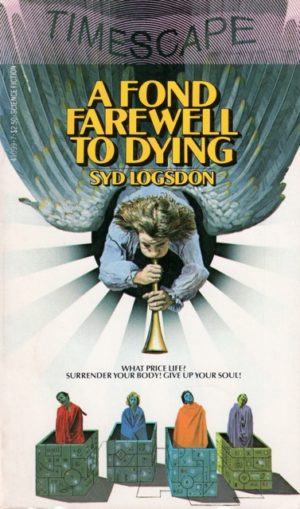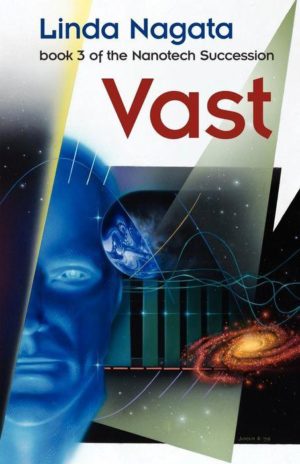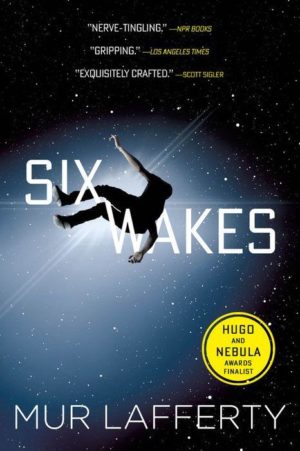Human bodies have their advantages, but in the end they are all too delicate. Age, ravenous carnivores, innocent mishaps involving a large cloud of gasoline vapour and a struck match: All of these can doom a body and the mind that inhabits it. But imagine… if a mind could be backed up , then all it would take to resurrect someone is a suitable body and a way to load the mind into it. This theme has been a very, very popular idea with science fiction authors over the decades, as these five examples show.
The City and the Stars by Arthur C. Clarke (1956)

The inhabitants of the ancient city of Diaspar are functionally immortal. As long as the relevant Central Computer records exist, each citizen can be incarnated over and over, living out every possible permutation of their lives within the confines of the city. This system has proven more durable than its creators may have envisioned: Civilization no longer spans the galaxy, Earth is nearly lifeless, but Diaspar prevails a billion years after its founding.
Stagnation is comfortable but perhaps dangerous. Alvin is one of the rare unique persons who are intermittently created to ensure that Diaspar does not stagnate completely. Alvin is going to succeed in this purpose and then some.
The Ophiuchi Hotline by John Varley (1977)

Among the many, many benefits of the Ophiuchi Hotline, the alien broadcast to which the Eight Worlds have listened for decades, is the ability to record minds and decant them into waiting clone bodies. Dying permanently is therefore almost impossible. It’s possible only if every record of a person’s genetic code and every backup of their mind is destroyed. Lilo has the rare honor to have earned, by reason of her illicit genetic research, the state’s very sincere determination to eliminate her current incarnation—easily done by dropping her into a convenient black hole—in concert with total erasure.
However, the same skills that permitted Lilo to egregiously violate the law make Lilo a valuable commodity if she can be whisked out of prison—too bad for the clone that replaces Lilo!—ensuring that she’ll be a loyal servant if she does not want to be handed back to the authorities. That’s the theory. The practice is that Lilo, indeed all the Lilos, are very uncooperative slaves.
A Fond Farewell to Dying by Syd Logsdon (1981)

An immigrant to superpower India from the backward American remnants, David Singer (or Ram David Singh, as he renames himself to ingratiate himself to his Indian hosts) seems an unlikely beneficiary of official research funds. However, it just so happens that David’s pursuit of artificial serial incarnation via memory records and clones might, as a side effect, restore to health the prime minister’s grandson Nirghaz Husain. Husain was horribly injured in an airstrike ordered by the prime minister himself, just one more instance of the unending squabbling between India and neighbouring Medina. If David were to succeed, the prime minister could make amends to his grandson.
Of course, this raises the question of what to do with the original Husain…not to mention the issue of whether the clone will be Husain reborn or merely a brainwashed victim. Or if anyone involved in the bold project will survive India’s high-stakes, full-contact political struggles.
Vast by Linda Nagata (1998)

The alien Chenzeme littered swaths of the Milky Way with ancient but still functional war machines. Although the war that spawned them is long over, the machines are perfectly happy to target humans who encounter the homicidal relics. Some human ships escape; most of them are eradicated.
The starship Null Boundary was lucky enough to survive an encounter with Chenzeme relics. Now the craft flees towards what the crew hopes will be answers, pursued by a relentless relic. Stern chases are long chases, particularly where sublight interstellar vehicles are concerned. Mortal humans might well die of old age mid-voyage. Mind-recording is only one of the marvelous technologies humanity has mastered, but it is the one that proves most useful to the crew of the Null Boundary.
Six Wakes by Mur Lafferty (2016)

Interstellar travel is slow and dangerous. Therefore, prudent planners have contingency plans to deal with unexpected deaths. In the case of sleeper ship Dormouse, three light years on its way to Tau Ceti, the contingency plans center on mind tapes and cloning. Why lose a skilled crewmember forever when one can simply unbottle a fresh clone and imprint it with the memories of the dead caretaker?
Maria Arena’s latest iteration wakes to discover that the ship, and its cloning system, has been attacked. Person or persons unknown massacred the entire crew, sabotaged Dormouse’s AI, and sent the ship off-course. Even the cloning system was targeted: The clones have the memories of their predecessors, but those memories are years out of date. Working out the killer’s identity and their motive will therefore be challenging. Good news, though: The suspect list is quite short. Because the passengers are in cold sleep and Sol is three light years away, the killer or killers must have been crew themselves.
***
Fun with recorded memories is, as I said, popular in SF. No doubt you have your own favourites. Comments are below.
In the words of Wikipedia editor TexasAndroid, prolific book reviewer and perennial Darwin Award nominee James Davis Nicoll is of “questionable notability.” His work has appeared in Publishers Weekly and Romantic Times as well as on his own websites, James Nicoll Reviews and the 2022 Aurora Award finalist Young People Read Old SFF (where he is assisted by editor Karen Lofstrom and web person Adrienne L. Travis). He is a four-time finalist for the Best Fan Writer Hugo Award, is eligible to be nominated again this year, and is surprisingly flammable.










